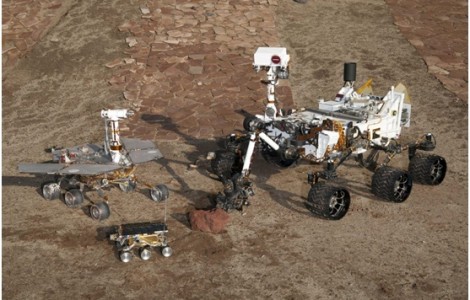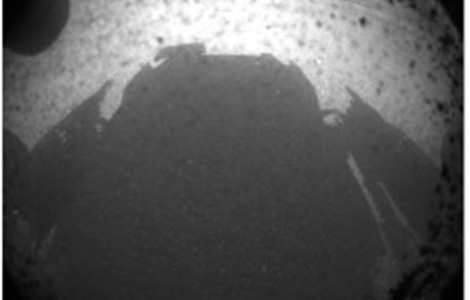 The robot Curiosity that NASA sent in November 2011 to Mars, "marsted" on the soil of this planet yesterday, August 6, at 6:31 am, Lisbon time.
The robot Curiosity that NASA sent in November 2011 to Mars, "marsted" on the soil of this planet yesterday, August 6, at 6:31 am, Lisbon time.
That was the end of the first stage, that is, the end of a fantastic and long journey from our planet to the surface of Mars, where an innovative, but also very risky, system was used to control access to the Martian atmosphere and consequent path to Martian soil.
This robot is the most complex and heaviest robot ever sent into space. As you can see in the figure, the Curiosity is much bigger than the Sojourner – Mars Pathfinder (sent to Mars in 1996, and that compared to the Curiosity looks like a toy) and more than 5 times larger than the Opportunity/Spirit (sent to Mars in 2003).
Na verdade, or Curiosity is the size of a small utility car, weighing about 900 kg (including about 80 kg of scientific instruments) for 3 meters in length, featuring 6 wheels, a robotic arm, two computers for control and navigation (therefore being one redundant system), several chambers and a very complete and diversified set of scientific equipment, making it a sophisticated robotic mobile laboratory.
This robot is prepared to move at a maximum speed of 90 meters per hour, and the average operating speed is expected to be 30 meters per hour, and travel around 20 km during the two years it will be at the service of our curiosity.
With it, NASA intends to respond to two objectives: Search and find places where life might have existed; Look for evidence of the existence of life, trying to understand in what forms it existed and why it disappeared.
But let's start at the beginning. In order to explore the red planet, the robot Curiosity had to reach the planet and land intact on the surface. Just imagine the difficulty of doing this with a vehicle that weighs 900 kg, roughly the weight of a Fiat 500. After separating the last launch module, which gives you the last boost for the 8-and-a-half month journey to the red planet, everything happens very fast, in a crazy and mind-blowing 7 minutes.

In fact, 10 minutes before entering the planet's atmosphere, the module that accompanied the robot during the trip, and allowed strict control of the entire process, separates and the spacecraft heads to the surface at about 13000 miles per hour (20921 km/h). When entry into the atmosphere is detected, the 7 minutes of terror begins.
With the help of side rocket engines, the spacecraft slows down to around 1600 km/h. The ship's shield of protection reaches 1600 degrees centigrade. When the speed of 1448 km/h is reached, at a distance of 12 km from the surface, a large parachute opens, which helps to decelerate the ship. A few minutes later, about 9 km from the surface and traveling at a speed close to 600 km/h (about half the speed of sound), the underside of the protective shield comes off leaving the robot Curiosity visible: at this point the ship starts searching the surface with its radar.
When the ground clearance is about 1609 meters, the spacecraft detaches itself from the rest of the protective shield and the parachute and starts a descent controlled by rocket engines, reducing a speed that at that moment is about 320 km/h. The rockets stabilize the spacecraft and slow it down to about 3 km/h, at a height from the ground of close to 18 meters. At that point, the robot is suspended by steel cables of about 7 meters and the descent is made until it finds the surface at a very slow speed.
When the touchdown is detected, and confirmed within a period longer than 1.5 seconds, the cables are cut by small explosives and the propulsion system moves away. The robot is safely on the surface. It's been 7 minutes since entering the Martian atmosphere, which is 100 times thinner than the Earth's.
(Go on)
(Full version in http://www.re-visto.com/curiosity)
 Author J. Norberto Pires is a professor at the Department of Mechanical Engineering at the University of Coimbra
Author J. Norberto Pires is a professor at the Department of Mechanical Engineering at the University of Coimbra
Science in the Regional Press


















Comments